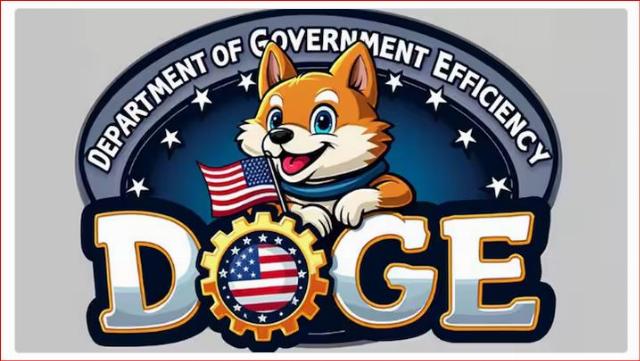Government Downsizing and the Left’s Instinctive Outcry
Some 75,000 federal employees have accepted the Trump administration’s voluntary buyout offer and the Trump administration is ramping up the firings of various groups of federal workers as well, from ineffective inspectors general to partisan U.S. Attorneys, and possibly whole wasteful agencies whenever the case can be made and its legality confirmed.
The American Left is horrified by this sudden activity. Normally, it’s only Democrat presidents who move this quickly, and of course, they move in the opposite direction. This wasn’t expected; they thought they could keep President Trump on his heels, stymied from most of the actions that he was elected to do, as in his first term.
One of the more interesting reactions is the shedding of tears over government workers losing their jobs. The Left’s dutiful shills in the media are writing articles about the personal trauma suffered by these government employees, now suddenly jobless and faced with the challenges of paying for their children’s expensive private schools, their expensive electric cars, their expensive Washington D.C. area homes.
How many such articles, how many such angry speeches and demonstrations, how many compassionate Facebook memes did we see from the Left when the Biden-Harris regime fired the people already under government contracts, working on building the wall on the Mexican border? How many did we see when the Biden-Harris regime fired everyone working on the Keystone Pipeline, within the first week of their miserable single term of office, directing millions of dollars of already-purchased building materials and equipment to be left on the ground to be stolen or destroyed?
It's interesting that the Left didn’t have this kind of compassion for all the truck drivers and construction workers who were suddenly displaced by those executive orders -- written by others for Joe Biden to sign -- and their needs were likely at least as great, proportionately speaking. But then, the people fired by Joe Biden’s signature don’t live in the Washington Beltway, where the cost of living is among the highest in the country.
Journalists and politicians don’t live next door to the people fired by Biden or left unemployed by his policies. Their children don’t go to school with the children of truck drivers and construction workers. Their plight was completely out of sight and out of mind. The Biden-Harris regime gleefully fired them all -- because the dutiful observance of the climate cult and the love of open borders are key elements of their philosophy, and that trumps the human lives affected by their executive orders.
There are therefore both similarities and important differences between the Biden-Harris cases and the Trump-Vance cases.
Note that these Biden-Harris examples were of people working on specific government projects that were designed to help the private sector. Once the pipeline is built, once the border wall is finished, the private sector is safer, freer to prosper than it was before.
The border wall would have reduced illegal competition for private sector jobs, along with the gangland crime that infests our cities, and the welfare state burden on 
By contrast, the relatively few Trump-Vance firings -- and the much greater number of encouraged optional departures (through a private sector style “buyout offer”) -- are focused on government workers who are generally a cost burden on the private sector, in two ways: both as objectively highly paid employees and as the writers and enforcers of often terribly destructive regulations that in most cases should not exist at all.
We must remember, the United States of America are bound together by a constitution, a document that can viewed as fulfilling not one but two distinct functions, only one of which is really rigorously taught or popularly understood today.
- The Constitution is a framework for how the federal government is elected and split up. It lays out the three branches, and describes how congressmen are at least 25 and serve for two-year terms, while senators are at least 30 and serve for six-year terms, and so forth. But while that’s the only part of the Constitution that is really taught, it’s not the main purpose.
- The Constitution is a binding contract between the states and the federal government, authorizing that federal government to take over only certain specific functions while forbidding the federal government from all others -- and also, through the Bill of Rights, even restricting how it is allowed to perform those functions. This is really the main purpose of the Constitution -- the absolute limitation of the size of government -- and it’s the part that our teachers leave out when talking about how everything is split into three branches and how presidents get four-year terms and have to be at least 35.
When President Trump first ran for office, we were told he was a problem-solver, not an ideologue. He didn’t talk much about the Constitution, or about the general philosophy of our Founding Fathers, as Presidents Reagan and Coolidge always did.
But in practice, especially as this second term develops, it is evident that President Trump is on board with the zeitgeist of the Framers, whether he enunciates those words as a political philosopher or not. His goal is to reduce the size of the Leviathan, by any means necessary. Looking at this country today, 250 years after the meeting of the Continental Congress, that would certainly be their goal for him as well. Our nation has grown beyond what any of the Founding Fathers could have foreseen, but its federal government has become everything the Founders pledged “their lives, their fortunes, and the sacred honor” to prevent.
President Trump and his team understand that we must recognize what most of the federal government really does, every single day they work. It’s not just about cutting out the salaries and benefits of tens of thousands of unnecessary federal employees.
It’s about taking away the pens, phones, and computers of tens of thousands of destructive federal workers so they can’t fill the Federal Register every day with more lead weights to weigh down the private sector.
When a private sector company lays off staff, it’s generally to try to become more productive, more cost-effective. By contrast, we need the public sector today to actually do less, much less -- it needs to write fewer rules, issue fewer mandates, hogtie the private sector with much less federal red tape. The Trump-Vance administration understands that even if many of these individual federal employees are diligent, dutiful, hard-working and well-meaning people, that doesn’t change the fact that their presence at a government desk is a millstone on the neck of the free market.
And so it is that these federal employee reductions are a necessary step, too long postponed, in the effort to return America to the City on a Hill that it was meant to be.
The next time you see some leftist whining that 75,000 federal employees were just pushed out, ask yourself, did the Biden-Harris team give eight months of salary to the thousands of construction workers and truck drivers they fired on their Day One, four years ago?
And what concern has the Left ever shown for the millions of retail workers, manufacturing workers, entrepreneurs, farmers, private-school workers, and small businessmen who have been driven out of business or otherwise crippled in their standard of living by the past hundred years of ever-growing government growth and destructive overregulation?
This administration puts the American people first. It’s a welcome change.
John F. Di Leo is a Chicagoland-based international transportation manager, trade compliance trainer, and speaker. Read his book on the surprisingly numerous varieties of vote fraud (The Tales of Little Pavel), his political satires on the Biden-Harris years (Evening Soup with Basement Joe, Volumes I, II, and III), and his most recent collection of public policy essays, Current Events and the Issues of Our Age, all available in eBook or paperback, only on Amazon.
Image: Elon Musk





